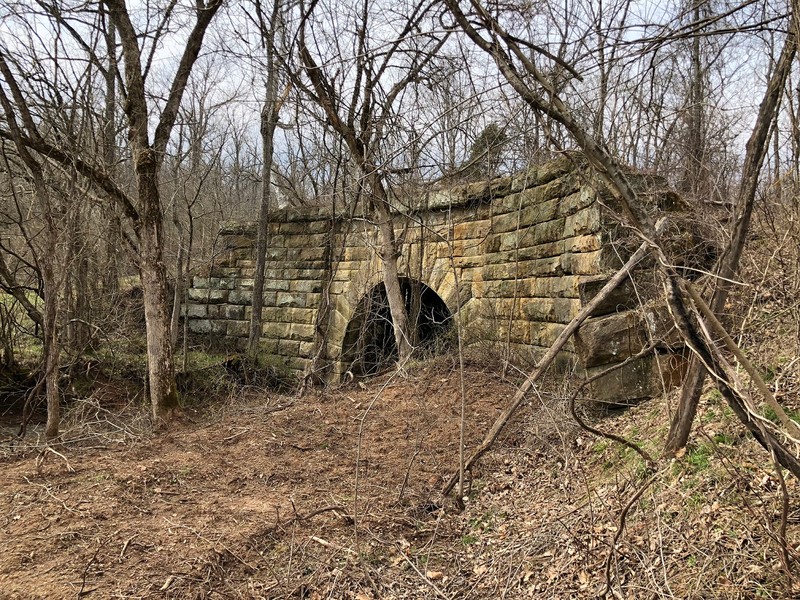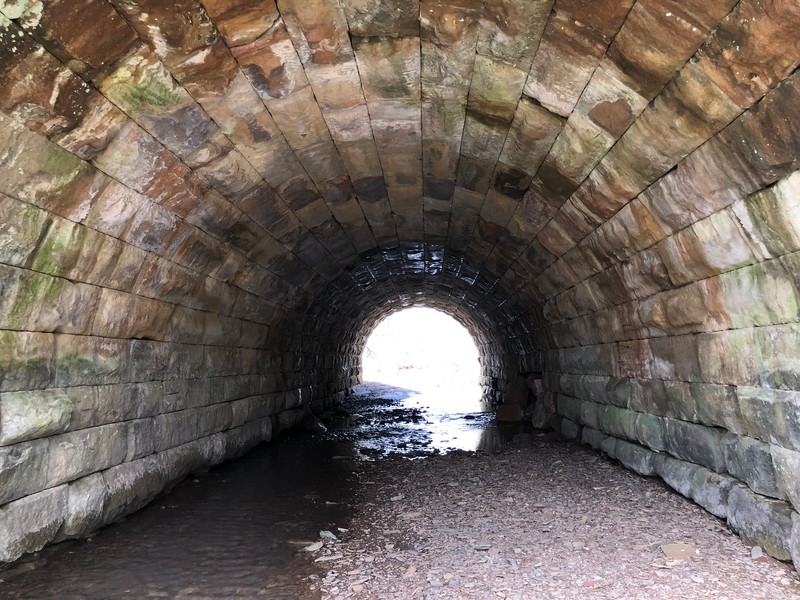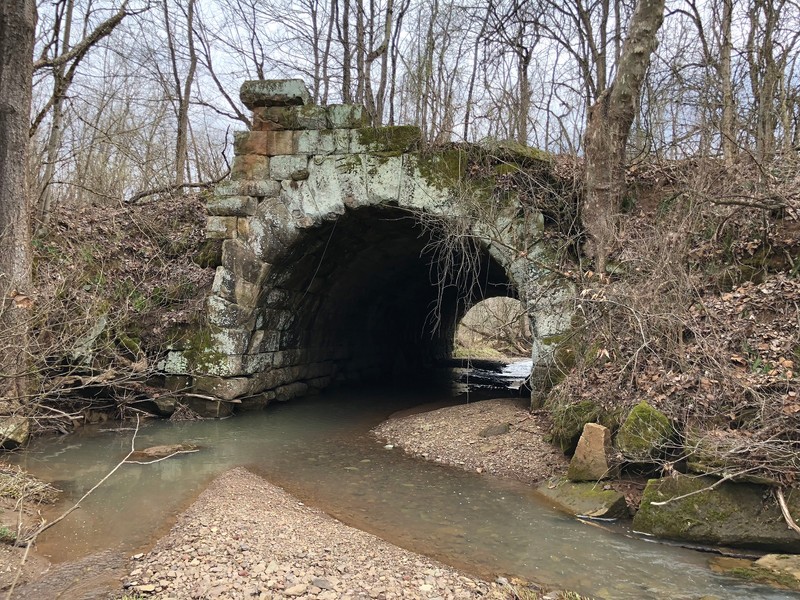Roddy Road Tunnel
Introduction
Text-to-speech Audio
The Roddy Road tunnel is a sandstone block arched tunnel. A creek flows through the tunnel, and railroad tracks once passed above. Currently the road runs next to the structure, though in the past the road went directly through the tunnel alongside the Creek. The Marietta and Cincinnati Railroad built the tunnel in the 1850s to serve their line. However, the tunnel is much longer than just the width of the railroad, this apparently was to allow room for farmers to move livestock and equipment over the tunnel as well, without interfering with the railroad.
Images
Roddy Road Tunnel April 6, 2018, southern opening

Roddy Road Tunnel April 6, 2018, looking up tunnel from southern opening

Roddy Road Tunnel April 6, 2018, northern opening

Backstory and Context
Text-to-speech Audio
Incorporated in 1845 as the Belpre and Cincinnati, the Marietta and
Cincinnati Railroad began constructing a line from Marietta through
Southeastern Ohio in the 1850s with the goal of connecting Marietta with
Cincinnati. The railroad's founders envisioned a line that would carry
passengers
and freight across the lower portion of Ohio, as well as connect to the
Baltimore and Ohio and larger railroads to the east. The
Appalachian Foothills posed a challenge to early railroad engineers,
who were forced to design and construct many tunnels, trestles, and
culverts in order to maintain the railroad's grade. Despite financial
setbacks, the Marietta and Cincinnati railroad accomplished its goal;
the first train ran the complete distance between Cincinnati and
Marietta in 1857.
The first portion of the Marietta and Cincinnati Railroad's line
connected Cincinnati to Chillicothe and opened in 1855. In April of 1856
the line opened as far as Athens. Completing the
section that connected Athens to Marietta was more difficult, and it
took another year to open
to regular rail traffic. The company continued to improve the original
line. The Roddy Road structure is part of the line between Athens and Marietta, and is one of many culverts, bridges, and tunnels built to maintain grade through the hills and valleys. Though the exact date is unclear, the railroad likely built the structure after the heavy rains of 1858 washed out many original culverts.1 Made from large sandstone blocks held together by keystone arches, the tunnel section is 120 feet in length. A road which has since been moved used to run through the tunnel, now only a creek flows under the sandstone vault.
In 1868, the Baltimore and Ohio Railroad gained enough shares to
control the Marietta and Cincinnati. In 1889, the B&O assumed
outright control over the line then dissolved the M&C. Meanwhile, in
1871, the Baltimore Short-line Company formed with the purpose of
laying a railway from Belpre to Athens. In 1874, the company completed
the short line, rendering the old line from Marietta to Canaanville
redundant.2 The B&O abandoned the costly to maintain line shortly
thereafter. The Toledo & Ohio Central Extension claimed the unused
line in 1884, and operated until 1893, when the company went into
receivership.3
Sources
1. Byers, David E. The Federal Valley Railroad Company & its Ancestors. Westerville, OH. Integrity Press, 2000. 12.
2. History of the Hocking Valley, Ohio. Chicago, IL. Inter-State Publishing Co., 1883. 137-138.
3. 2. Andrews, Martin R. (Editor). History of Marietta and Washington County, and Representative Citizens. Chicago, Il. Biographical Pub. Co. 1902. 274.
4. "Program on Old Rail Line, Huge Piers." Marietta Times. October 3, 2013.